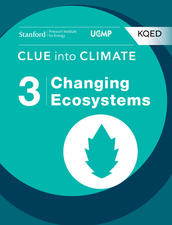 When I was in college—way back when Veruca Salt was wildly popular and you surfed the “World Wide Web” using Netscape—I saw a presentation in my environmental science class on e-books. What were the environmental benefits of e-books? Would they save paper? Be more economical? What would make them catch on?
When I was in college—way back when Veruca Salt was wildly popular and you surfed the “World Wide Web” using Netscape—I saw a presentation in my environmental science class on e-books. What were the environmental benefits of e-books? Would they save paper? Be more economical? What would make them catch on?
The idea of e-books generated sincere skepticism in my class of 30 “brilliant” college students. E-books were, quite frankly, in our opinion “dumb.” And this was coming from students at a computer engineering school!
So, turns out 18-year-olds don’t know everything—shocker. As my class of e-book skeptics aged into actual maturity, we came around to and are now the ones who rabidly track down the latest version of Kindle and debate the benefits of the iPad over the Nook. Unsurprisingly, education has caught the e-book bug as well, and many schools are throwing out (or, hopefully, recycling) heavy textbooks in favor of slim iPads that can carry the content of hundreds of textbooks in under 2 pounds. E-books are better in some ways too, as they can integrate videos and interactive animations into what was once a static page, making it more appealing to students with famously short attention spans and little interest in anything “old fashioned” like a book.
Now the question is not whether we should use e-books for education, but rather which books to use. The e-book I want to highlight today directly connects back to my previous In the Classroom post where I talked about ocean acidification. Ok, I don't have an obsession with this topic—though I love to talk about it—but it is a great way to address climate change, as it represents a convergence point for fairly simple chemistry and biology, and has dramatic impacts that are both clear and surprising.
KQED Quest, an NPR multi-media science site funded by the National Science Foundation, has created 4 e-books on climate change for iBooks. Of the e-books available, my favorite one by far is book three on ecosystems, and the best chapter is chapter two on ocean acidification. KQED weaves together the science with its incredible video and audio library, enriching the evidence with dazzling visuals. KQED uses its wealth of media resources to connect to the larger picture—and to answer the all-important question: Why should we care?
This chapter opens with a video about coral reefs and climate change, addressing not just the impact on corals themselves, but on all of the animals that depend on them for their habitat.
It then runs a great animation that demonstrates the chemistry of ocean acidification and its effect on calcium carbonate shells, and it ends with an audio track discussing the repercussions of acidification on sea butterfly populations that form the base of the ocean food chain.
There is a lot more available from KQED Quest on climate change with its three other books, but this section is definitely one of the strongest pieces. Ocean acidification is a challenging concept for students to take on, but this book visualizes the information in way that students will understand today—further illustrating that I didn’t know as much as I thought I knew 15 years ago!

